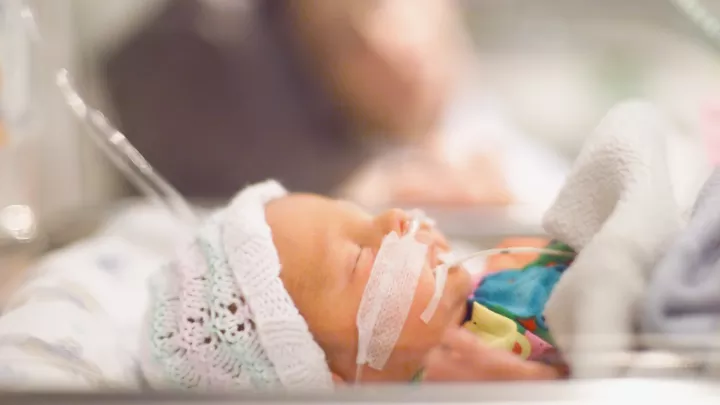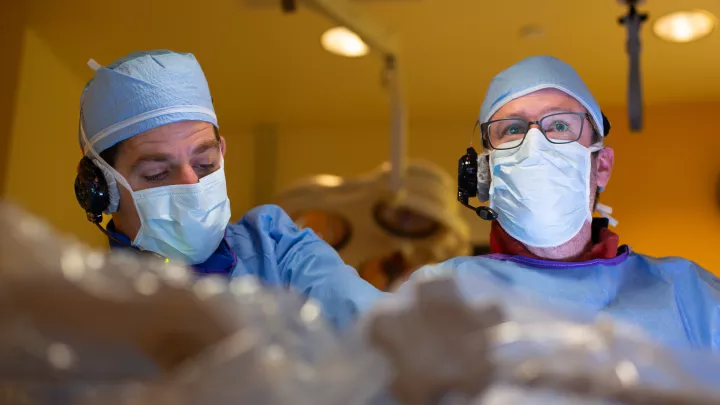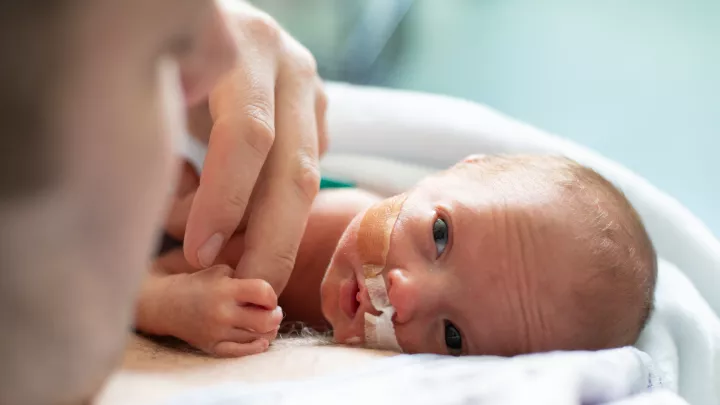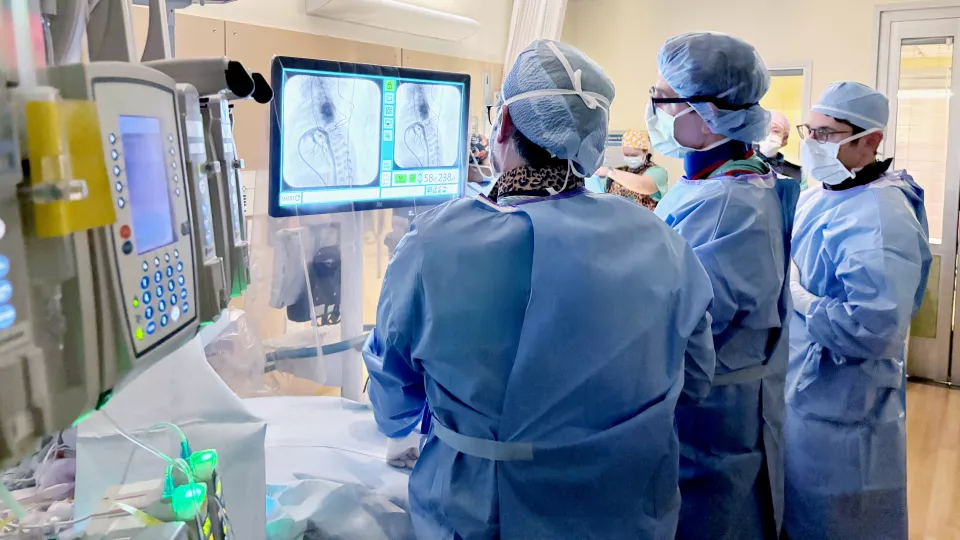
The CHLA team during a bedside Piccolo PDA closure, using the SMART-C machine
Technology Streamlines Bedside Piccolo PDA Closure for Premature Babies

Since 2023, Children’s Hospital Los Angeles has been one of a small number of centers in the country that performs the Piccolo patent ductus arteriosus (PDA) closure at a baby’s bedside.
Now, CHLA has made this minimally invasive procedure even safer and more streamlined for these premature babies—thanks to a machine small enough to fit in a suitcase.
The mini C-arm fluoroscopy machine, called the SMART-C, fits inside a baby’s isolette in the Steven & Alexandra Cohen Foundation Newborn and Infant Critical Care Unit (NICCU) at CHLA. Interventional cardiologists then use the transcatheter Amplatzer Piccolo Occluder device to close the defect, while the baby remains in the bed.
“These babies are very fragile, so we don’t want to move them or take them off their ventilator,” explains Patrick Sullivan, MD, an interventional cardiologist in the Heart Institute at CHLA. “This equipment allows us to do the procedure in a very stealth, smooth, and safe way.”
Increasing safety

Many babies who need PDA closure are critically ill and extremely premature, with a gestational age as young as 22 weeks. It’s often too risky to transport these patients to the Catheterization Lab.
“Bringing the procedure to the NICCU has allowed many more babies to have this defect repaired in a minimally invasive way,” says Darren Berman, MD, Director of Congenital Interventional Catheterization at Children’s Hospital Los Angeles.
That’s important because an open ductus arteriosus can result in too much blood flow to the lungs, leading to heart failure and increasing the need for ventilator support. “As soon as we close the defect, we see blood pressure and perfusion improve significantly,” Dr. Sullivan says.
Since July 2023, CHLA has performed 19 Piccolo PDA closures at the bedside, based on a protocol developed with colleagues in the Fetal and Neonatal Institute. Initially, the team used a larger fluoroscopy machine borrowed from an orthopedic operating room. But it could not be used in the isolette.
“Even moving these patients to an adjacent procedure table can be delicate,” Dr. Sullivan notes. “All our procedures have gone well, but we wanted to lower any potential risks even further.”
How it works
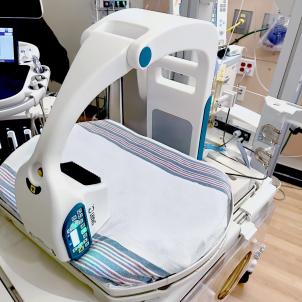
The mini C-arm fits right in the isolette—providing real-time X-ray video imaging of the procedure, which is also guided by ultrasound. The machine folds up easily into a suitcase and weighs just 16 pounds.
“It’s easy to use, and we get really good angiography,” Dr. Sullivan says. “When we inject contrast or implant the device, we can see it really well. We know exactly where each vessel is.”
The equipment was funded by philanthropy. CHLA is one of just a handful of pediatric hospitals in the country to use it for bedside PDA closure.
“It allows us to fix the defect and improve a patient’s hemodynamics with very minimal disruption to the baby,” Dr. Sullivan says. “It’s like the baby never even notices we’re there.”
